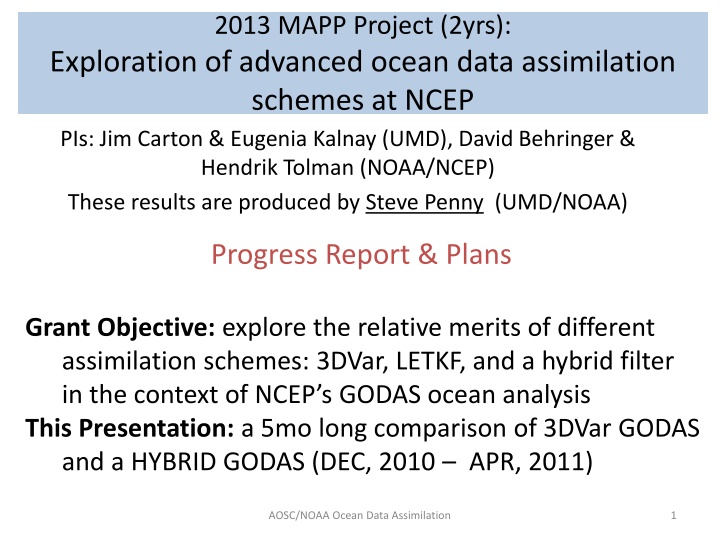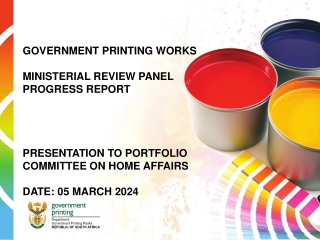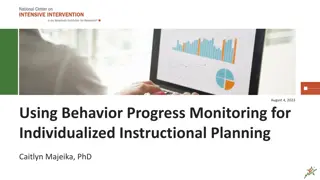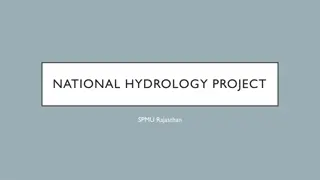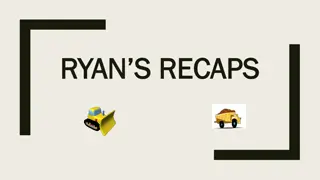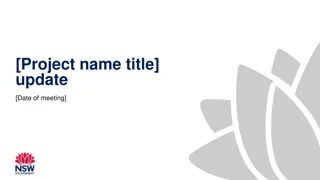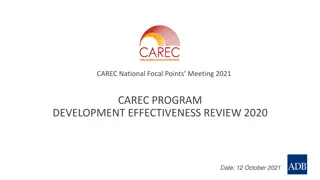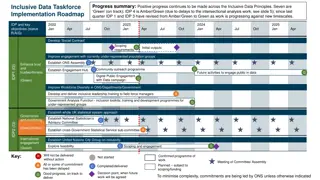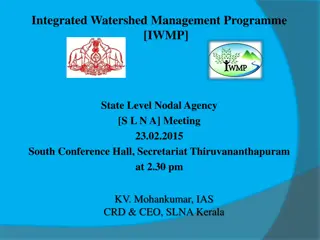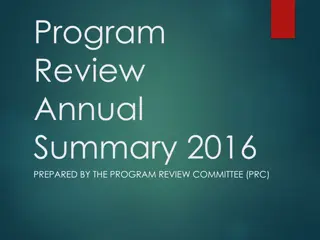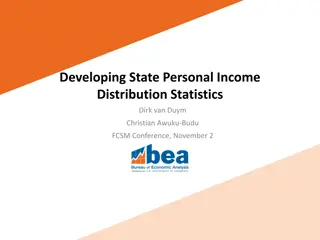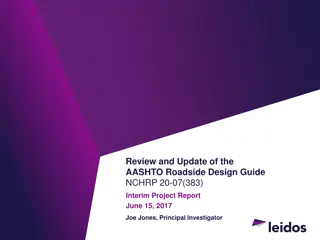State-Level Review and Project Progress Summary
This report provides an overview of the state-level review conducted on 7th January 2017 at the PWD Rest House in Thiruvananthapuram. It includes detailed information on project costs, expenditures, remaining balances, and the percentage of expenditure against the project cost across various projects in Kasargode, Kannur, Kozhikode, Malappuram, Palakkadu, Wayanadu, and Thrissur. The data is presented visually with images for better understanding and analysis.
Download Presentation

Please find below an Image/Link to download the presentation.
The content on the website is provided AS IS for your information and personal use only. It may not be sold, licensed, or shared on other websites without obtaining consent from the author.If you encounter any issues during the download, it is possible that the publisher has removed the file from their server.
You are allowed to download the files provided on this website for personal or commercial use, subject to the condition that they are used lawfully. All files are the property of their respective owners.
The content on the website is provided AS IS for your information and personal use only. It may not be sold, licensed, or shared on other websites without obtaining consent from the author.
E N D
Presentation Transcript
2013 MAPP Project (2yrs): Exploration of advanced ocean data assimilation schemes at NCEP PIs: Jim Carton & Eugenia Kalnay (UMD), David Behringer & Hendrik Tolman (NOAA/NCEP) These results are produced by Steve Penny (UMD/NOAA) Progress Report & Plans Grant Objective: explore the relative merits of different assimilation schemes: 3DVar, LETKF, and a hybrid filter in the context of NCEP s GODAS ocean analysis This Presentation: a 5mo long comparison of 3DVar GODAS and a HYBRID GODAS (DEC, 2010 APR, 2011) AOSC/NOAA Ocean Data Assimilation 1
3DVar GODAS as configured for this comparison Grid: Global tripolar grid, 1/4-1/2 deg x 40Lev res Physics: MOM4P1, KPP boundary layer mixing scheme, GM isopycnal tracer mixing, Smagorinsky velocity mixing, free surface, sea ice. Forcing: Wind stress, heat flux, E-P from GEFS, SSS relaxed to Levitus monthly climatology with a 10day relaxation. Assimilation: 3D VAR minimizes: ( ) ( J x x x B x x = ) ( ) ( + ) ( ) T T 1 1 a a f a f o a o a y Hx R y Hx Temperature and salinity error covariances vary geographically and temporally. Assimilation data: Temperature profile data (XBTs, Argo, moorings), Salinity profile data (ARGO) AOSC/NOAA Ocean Data Assimilation 2
HYBRID-GODAS 3DVar-GODAS cost function ( ) ( J x ) ( ) ( + ) ( ) T T = 1 1 a a f a f o a o a x x B x x y Hx R y Hx Replaced with: ( ) ( J x ) ( ) ( + ) ( ) T T = 1 1 a a a a a o a o a x x B x x y Hx R y H x xa where comes from LETKF. Then: ( )xa =axa+ 1-a a xHybrid : empirical weighting constant Bonus: The two existing data assimilation systems can be used with almost no modification AOSC/NOAA Ocean Data Assimilation 3
Comparison Experiment: 3DVar-GODAS vs Hybrid-GODAS Time Period:12/2/2010 4/5/2011 (~ 5 months) La Nina conditions peak in January (very high SOI), fade by May. Ocean model: same as 3DVar GODAS Initial conditions: from a 10-year operational GODAS analysis using NCEP R2 surface forcing. Perturbations introduced to create initial ensemble. Analysis Cycle: 5dy cycle, 5dy observation window Time filtering: none Observations: profile T, S (typically 1500/5dy) Forcing: GEFS winds, heating, freshwater Hybrid ensemble: 20-member ensemble with = 1.0. No inflation in the ocean interior. We ll focus on statistics of temperature observation minus forecast differencesAOSC/NOAA Ocean Data Assimilation 4
Results: RMS obs. minus forecast temp differences RMS T O-F All data No high lat data in 3DVar-GODAS 3DVar GODAS Thybrid minus T3DVar at 50m after 5mo HYBRID AOSC/NOAA Ocean Data Assimilation 5
RMSD in boundary currents AOSC/NOAA Ocean Data Assimilation 6
RMSD in tropics (20) Thybrid minus T3DVar at 50m after 5mo AOSC/NOAA Ocean Data Assimilation 7
RMSD in different basins No assimilation in GODAS in Arctic AOSC/NOAA Ocean Data Assimilation 8
RMSD with depth AOSC/NOAA Ocean Data Assimilation 9
Where we are now LETKF software has been rewritten to be compatible with GODAS framework New hybrid has been developed (see: Penny, 2013) to allow a seamless connection to 3DVar-GODAS. First results seem promising. A second, more extensive comparison experiment is being planned AOSC/NOAA Ocean Data Assimilation 10
Whats next Complete a more extensive comparison experiment (5yrs) Explore choices for localization, Introduce new observation types (SSH, SSS, Mass?) Introduce SST/mixed layer assimilation Upgrade to MOM5 ocean model Continue development of hybrid filter As time permits we may try to implement one or more of these filters in the RTOFS eddy-resolving model AOSC/NOAA Ocean Data Assimilation 11
